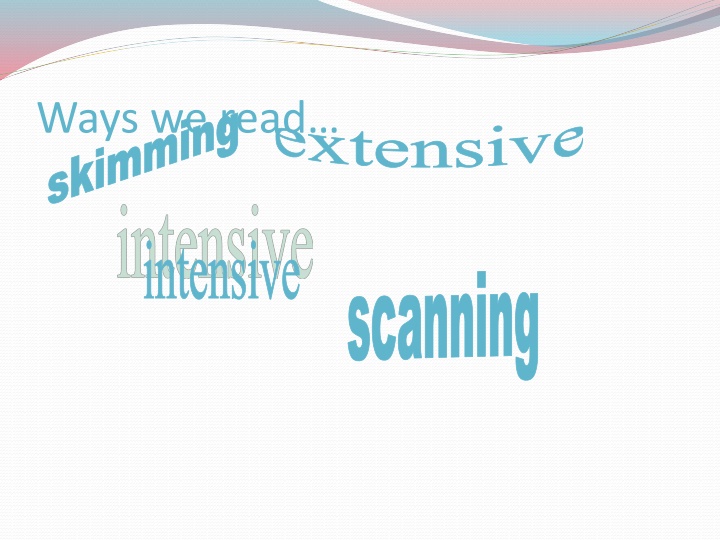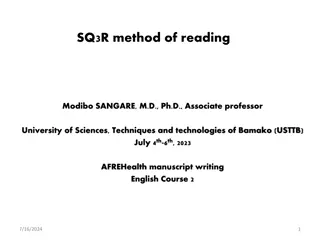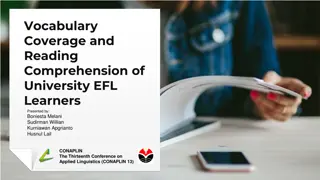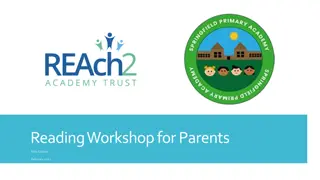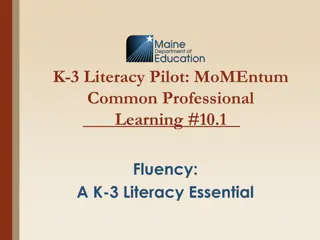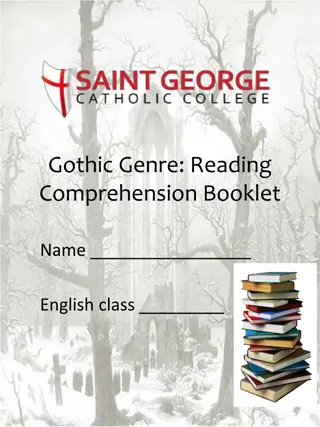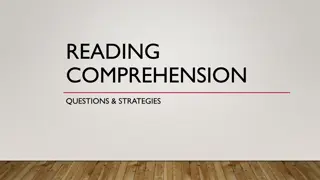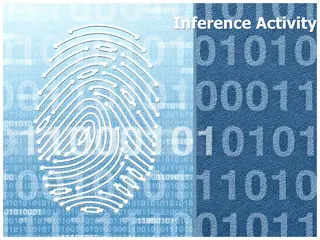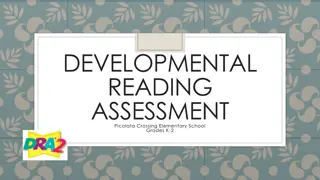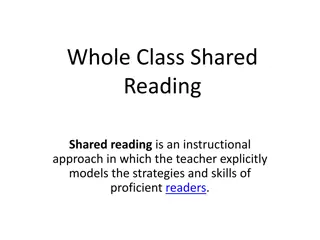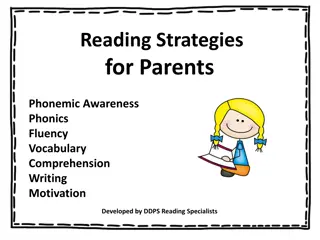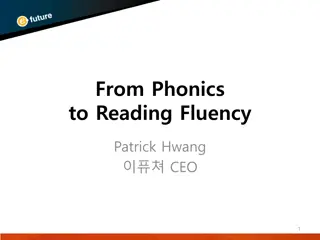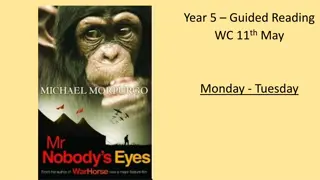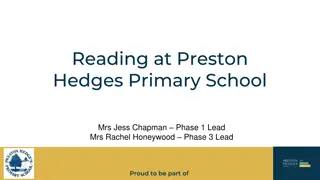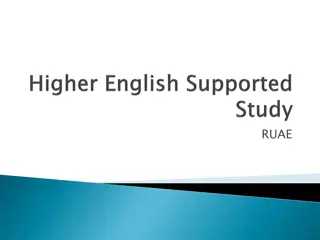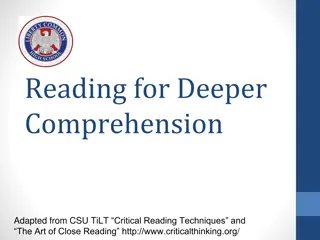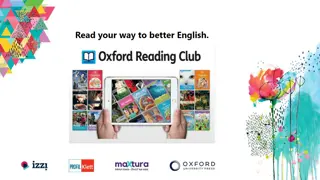Effective Reading Strategies for Better Comprehension
Enhance your reading skills with strategies like skimming, scanning, intensive reading, and extensive reading. Develop sub-skills such as predicting information and grasp the types of reading for improved comprehension. Engage in activities to practice and improve your reading skills effectively.
Download Presentation

Please find below an Image/Link to download the presentation.
The content on the website is provided AS IS for your information and personal use only. It may not be sold, licensed, or shared on other websites without obtaining consent from the author.If you encounter any issues during the download, it is possible that the publisher has removed the file from their server.
You are allowed to download the files provided on this website for personal or commercial use, subject to the condition that they are used lawfully. All files are the property of their respective owners.
The content on the website is provided AS IS for your information and personal use only. It may not be sold, licensed, or shared on other websites without obtaining consent from the author.
E N D
Presentation Transcript
Ways we read skimming extensive intensive scanning
TEACHING OF ENGLISH LANGUAGE INVOVES DEVELOPMENT OF FOUR SKILLS Listening Speaking Reading and Writing.
SUB-SKILLS OF READING SKILL Predicting information: more and more listening encourages predictive abilities and promotes interaction. *ability to read at a standard speed with adequate comprehension. *ability to understand specific points and central idea. *ability to get the writer s opinion and attitude. *ability to get the meaning from context. *Understand the marked features and their function. * Ability to read with proper punctuation, pronunciation, stress and intonation.
ACTIVITIES TO LEARN READING SKILL Recognize words Expand visual span Catch the relationship between words Guess the meaning of the new words and phrases, Understand the linking devices ,marked features etc. Practice and exercise- from easy to hard, specific to global etc.
TYPES OF READING Loud and silent reading * Intensive and extensive reading
Ways we read Intensive Reading every single word for meaning Extensive Bringing our world knowledge to the text Skimming Reading to get the main idea Scanning Reading for specific details or items
Skimmingrefers to the process of reading only main ideas within a passage to get an overall impression of the content of a reading selection. An example of this is when we read the title of a newspaper to know what happens everyday. How to skim: 1.Read the title. 2.Read the introduction or the first paragraph. 3.Read the first sentence of every other paragraph. 4.Notice any pictures, charts, or graphs. * Notice any italicized or boldface words or phrases. 5.Read the summary or last paragraph.
Scanning is a reading technique to be used when you want to find specific information quickly. In scanning you have a question in your mind and you read a passage only to find the answer, ignoring unrelated information. How to scan: 1.State the specific information you are looking for. 2.Try to anticipate how the answer will appear and what clues you might use to help you locate the answer. For example, if you were looking for a certain date, you would quickly read the paragraph looking only for numbers. 3.Use headings and any other aids that will help you identify which sections might contain the information you are looking for. 4.Selectively read and skip through sections of the passage.
Extensive reading Extensive reading is an approach to language learning, including foreign language learning, by the means of a large amount of reading. The learners view and review of unknown words in specific context will allow the learner to infer the word's meaning, and thus to learn unknown words. Extensive reading is contrasted with intensive reading, which is slow, careful reading of a small amount of difficult text
Extensive reading aims at helping learners to: Expand their vocabularies. Develop speed. Learn to deal with lengthy texts. Develop and maintain interest in reading. Improve their knowledge of language. Get information and widen their knowledge. Pass time and enjoy what they read. Read more and better; faster and with fuller understand
Intensive reading Intensive reading aims at giving the reader a deep and detailed understanding (comprehension) of the text and how its meaning carried. Intensive reading is used to develop specific reading skills. In intensive reading the reader pays attention to the contents of the text and also to how it is written. is transmitted or
The aim of intensive reading is: - to read for accuracy - to develop different reading skills - to analyze the text read Steps for teaching intensive reading: i) introduce the text to the pupils ii) teacher gives learners guiding questions to give a purpose for reading iii) Learners read as they take note of the answers to the guiding questions. iv) Pupils in small groups discuss answers to the guiding questions. v) Teacher clarifies general points not understood by learners. vii) Learners are given more work to assist them practice analyzing the text.
